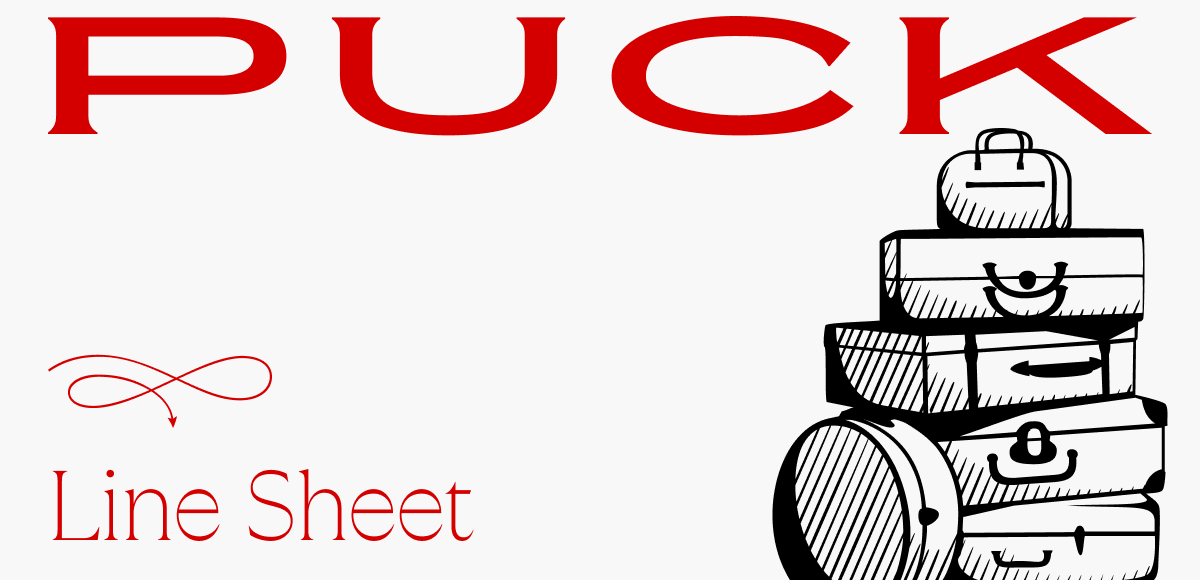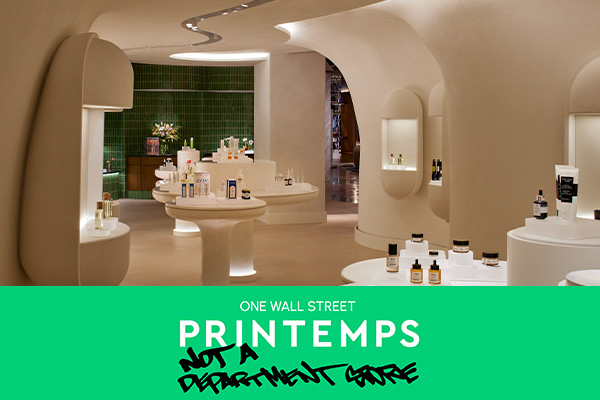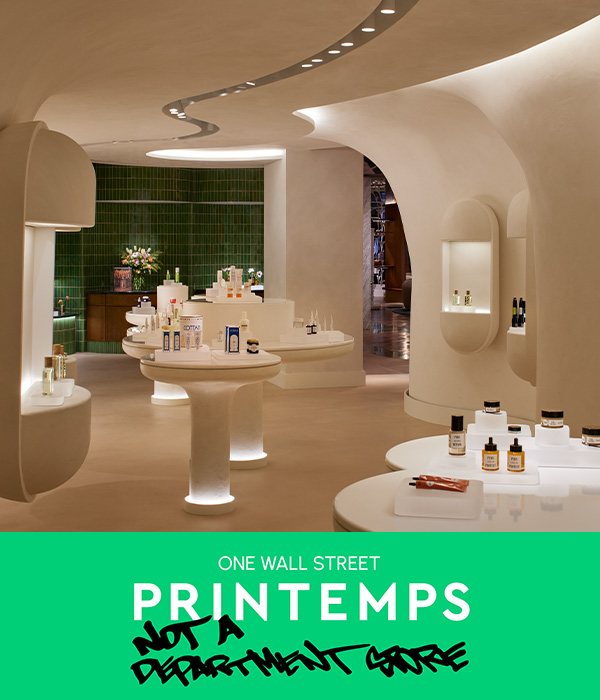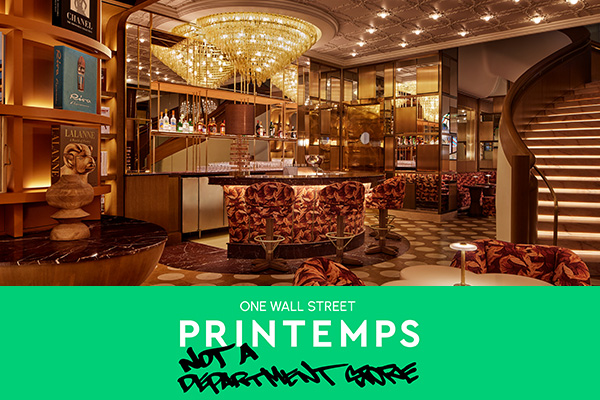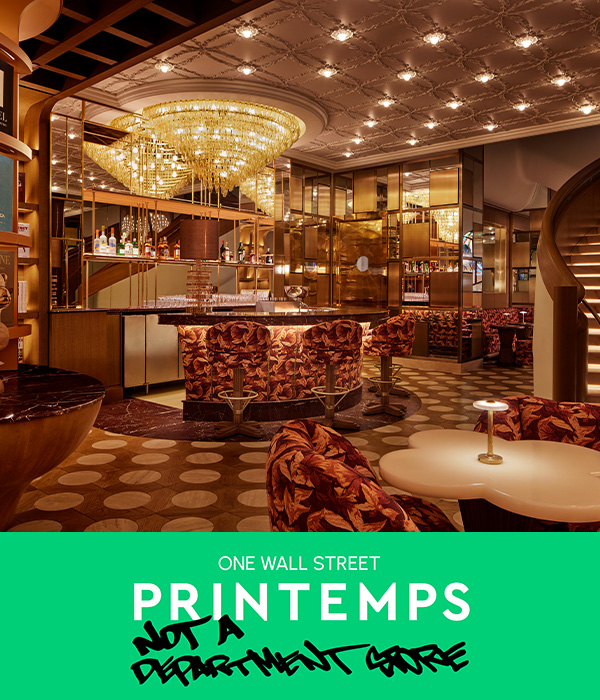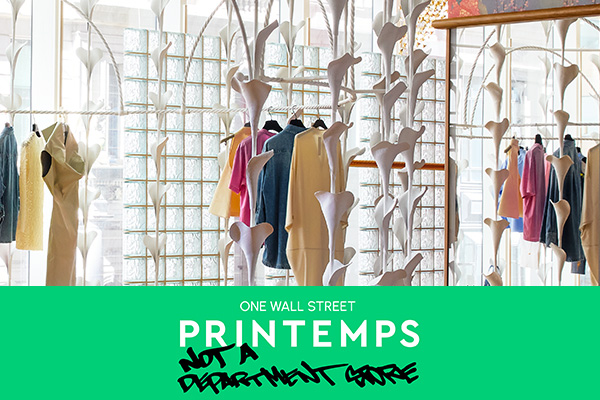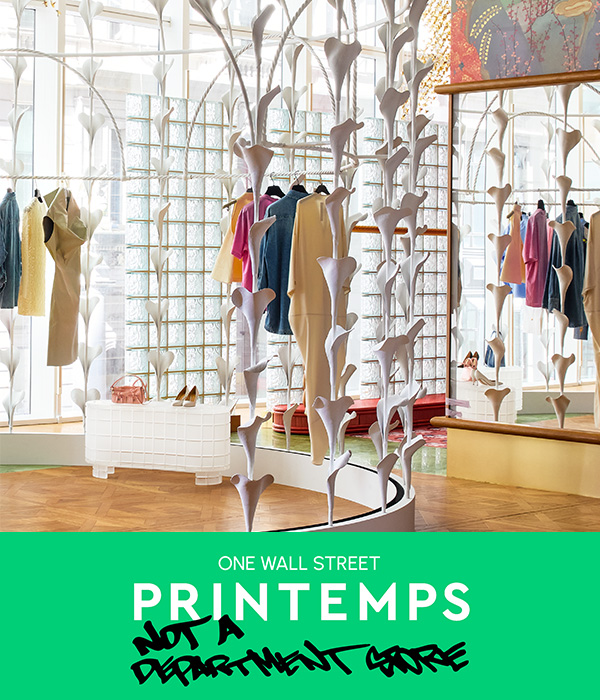Hi, and welcome to Line Sheet, coming at you live from Los Angeles, where the
sun is shining and the air smells like jasmine.
In other news, what in the world is going on at Saks Global? Today, as Richard Baker’s Hudson’s Bay Company begins liquidating the majority of its stores in Canada, I’m answering as many questions as I can about the disarray: the forthcoming layoffs, the prevailing mysteries of the deferred payment plan, and how it may all pan
out. Up top, there’s a real grab bag of goodies: the latest from Paris on Jack McCollough and Lazaro Hernandez’s arrival at Loewe, and Rachel Strugatz’s assessment of Skims’ acquisition of Skkn from Kim Kardashian and Coty. Kim, of course, is also a founder and material shareholder in Skims. Confused yet? She’ll explain.
I.R.L. programming note: Are you in L.A. this weekend? Do you like luxury? Do you like design? On Saturday, March 29, at 1 p.m. at the Pacific Design Center, in West Hollywood, I’m recording a live episode of Fashion People with Jesse Lee, the
proprietor of Design.Space LA, the art and design fair. Jesse is also behind the Design Miami fair and e-commerce site Basic.Space. We’ll be discussing why design is the new luxury and lots more. Want to attend this inaugural live taping of Fashion People, with the added benefit of being able to walk around the fair and check out (or even buy) works by
Jean Prouvé, Ettore Sottsass, Max Lamb, Pierre Paulin, Christo and Jeanne-Claude, Keiko Moriuchi, and plenty of other designers worthy of an Emily Oberg moodboard? RSVP directly on the Design.Space LA website.
Mentioned in this issue: Hudson’s Bay, Saks Fifth Avenue, Richard Baker, Marc Metrick, Neiman Marcus, Bergdorf Goodman, Chanel, Dua Lipa, LVMH, Amazon, Skims, Kim Kardashian, Skkn, Maria Grazia Chiuri, Jonathan Anderson, Lazaro Hernandez, Jack McCollough, Loewe, Proenza
Schouler, and many more…
|
|
|
A MESSAGE FROM OUR SPONSOR: NOW OPEN
|
|
|
Two
Things You Should Know…
|
- Loewe
and behold: It feels like things are finally normalizing at LVMH, where Proenza Schouler founders Lazaro Hernandez and Jack McCollough’s new post as Loewe co-creative-directors was finally announced this morning. They officially start on April 7, news that I shared with you all the way back on January 13,
just days after they signed their deal. That’s a long wait, explained in part by the tricky situation at Dior, where womenswear designer Maria Grazia Chiuri has two more shows to go before her successor (and former Loewe designer) Jonathan Anderson is announced. No word yet on
when Lazaro and Hernandez will stage their debut show, but you can bet on the fall. (Paris Fashion Week is September 29 to October 7.)
By hiring Hernandez and McCollough, who share certain aesthetic principles with Anderson, Loewe’s mantra appears to be “if it ain’t broke, don’t fix it.” But the brand can potentially double its €2 billion a
year in revenue with the right distribution and category expansion. When you look at the current LVMH portfolio, the only relevant ready-to-wear brands are Celine, Loro Piana, and Loewe. But I believe that Loewe, whose hero products are the Puzzle bag and the Flow runner, can be much bigger in the
category. After all, unlike Celine or Loro, Loewe doesn’t have a perennial piece of clothing that people buy up year after year. It’s mostly one-off ideas.
Luckily, Hernandez and McCollough have spent the past decade recalibrating their business to be less reliant on accessories and more focused on foundational wardrobe essentials. As two die-hard designers stuck managing a small business for the past 20 years, I’m sure the last thing they want to do is create basics at Loewe. But it’s
just another clue about why they were chosen.
Finally, it’s worth noting that the Loewe marketing team did a good job of getting the message out to customers via email. The formal note, which included a black-and-white portrait of Hernandez and McCollough, was simple and effective. Most of the people who buy Loewe don’t care about the identity of the creative director, but the email brought clarity for those who do—especially amid a very muddy process. Perhaps, in the end, the real star
of the Loewe story might end up being C.E.O. Pascale Lepoivre. If she manages to make this transition successfully, both artistically and commercially, her skills will be in big demand within the greater LVMH operation and beyond.
- Rachel on the Skims-Skkn deal: Late Friday, Skims announced that it was acquiring Skkn By Kim, the beauty line that Kim Kardashian created in 2022 with Coty. In some ways, the transaction
reflects a new level of self-dealing: Kim, who owned 80 percent of Skkn, is also a material minority shareholder in Skims. And the transaction allowed her to get out of a deal she’s been trying to exit since 2023. I’ve heard that the relationship between Kim’s team and Coty soured long ago, in part because Kim paid so little attention to the beauty line, especially after Skims became a unicorn. (Editor’s note: We don’t honor the random capitalization of letters in company names here at
Puck.)
A few months ago, I reported that negotiations were at a standstill because Coty couldn’t agree on price. But I think it got to a point where it was easier to write down Skkn By Kim as a loss so they wouldn’t have to deal with it anymore. It’s about a $20 million business, I’m told, so even if this deal values the brand, generously, at a 4-5x multiple, Coty’s 20 percent stake—which they acquired for $200 million in 2021—is worth less than $20 million. Kim
herself is probably coming out ahead here.
The hardest part of creating a successful beauty line is the marketing and communications piece, which is where Skims excels. I’ve actually wondered why they haven’t been doing Kim’s beauty all along. Whatever this new beauty line will look like, it can more or less be “Skims-branded” beauty—think Skkn By Skims or SkimsSkkn. —Rachel Strugatz
|
|
|
News and notes on the latest collateral damage stemming from Richard Baker’s
empire-building Saks Global experiment, from vendor fights to more layoffs.
|
|
|
Today, Hudson’s Bay, the oldest company in Canada, began liquidating the
majority of the 80 stores in its portfolio. The liquidation will provide, um, the liquidity to maintain the company’s six Canadian locations—including the flagship on Toronto’s Yonge Street—as American retail executive Liz Rodbell attempts to rebuild the enterprise, which began as a fur trading post in 1670.
The store closures in Canada include three Saks Fifth Avenues and 13 Saks Off 5th outlets, currently operated via a licensing deal with
Saks Global. Up until the end of last year, after all, Saks Fifth Avenue was a part of Hudson’s Bay Company ULC, a holdco chaired by real estate mogul Richard Baker, who also happens to be the chairman of Saks Global, the new American entity that includes Saks Fifth Avenue, Neiman Marcus, and Bergdorf Goodman—the latter two acquired in a transformative
$2.7 billion deal at the end of 2024.
|
|
|
A MESSAGE FROM OUR SPONSOR: NOW OPEN
|
|
|
Saks Global and Hudson’s Bay Company might technically be completely separate businesses
now, but they are forever linked by Baker, who has earned a reputation for stopping at absolutely nothing to control as many buildings as he can. Baker deals in luxury mostly because his family business has been retail real estate. (His father was a mall developer.) But as department stores have turned into ghost towns, with consumers turning more frequently to the web for cheap goods, he continued to buy the dip. And now, for better or worse, that’s made him one of the most consequential people
in fashion, at least at this moment.
Baker and longtime deputy Marc Metrick, the C.E.O. of Saks Global, have been dealing with the repercussions of combining these three historic department store brands at a time when the entire industry is deeply challenged. Now, as Hudson’s Bay manages liquidation, industry executives are wondering whether Saks Global, too, could be on a path to a
Chapter 11 restructuring. After all, Metrick sent that fateful and confidence-depleting Valentine’s Day love letter to brands outlining a plan to structure millions of dollars in backpay via monthly installments—starting in July, via a net 90 policy rather than the typical 30-day cycle.
Pretty much everyone was infuriated, save for the likes of LVMH, Chanel, and Kering, which were immediately informed that they would be offered a preferred treatment. Many brands that had been holding off on shipping spring merchandise to Saks Global stores until they were made whole have since abstained. Rumors abound of top-selling brands pausing their relationship with the stores. Many Saks Global partner brands have noticed
that the retailers’ buys for this fall are larger, perhaps to compensate for some missing labels.
Some brand attrition is expected, and even encouraged. But Saks Global has also been forced to make compromises with dozens of brands that the business can’t afford to lose. In the past few days, I’ve been asking myself: Why did it have to go down like this? Fundamentally, I understand Metrick’s position that the status
quo wasn’t working, and that operations needed to change in order to avoid ending up in the same situation as Hudson’s Bay. But there is more to it: Baker worked so hard to close the deal with Neiman Marcus Group that he may have made things a lot harder on the other side.
|
In recent days, I’ve uncovered a few things that help explain why Metrick felt it was
necessary to take such a hard line with certain brands. In addition to the weighty closing costs, Saks Global faced concession bills that were owed to the likes of Chanel. (I’m told that Saks is nearly paid up on all due concession fees, and that Chanel has been paid in full.) There was also, of course, the money owed to wholesale partners. On top of that, I was told by insiders that Neiman Marcus Group overforecast the amount of inventory they would hold in 2025, meaning that Saks Global
incorrectly expected a large windfall of inventory to borrow against. Opposing sources close to Saks said this is a mischaracterization, but the reality of the matter is that if there were more than enough money to pay everyone back immediately, they would.
Other peculiarities of the deal are making it harder for Metrick to move forward, too. The company has those arrangements with G-III and Authentic Brands Group,
which put Saks Global on the hook to invest in product that normally wouldn’t sit in a luxury department store. Following Amazon’s strategic investment in the merger, Saks is also launching on Amazon Luxury Stores.
|
|
|
But since most true luxury brands do not want to engage with Amazon, Metrick and his team are going to
have trouble persuading them to come aboard. They’ve said they are not putting unwanted pressure on brands. And yet, they have to fill the shop, just like they have to fill Saks Fifth Avenue, Neiman Marcus, and Bergdorf Goodman. We should have a better sense of where this is all going soon. More layoffs are expected imminently, following another round in February.
|
In the 12 years since Baker acquired Saks Fifth Avenue, top brands have opened up a
startling number of standalone stores in the U.S., rebalancing their sales to be majority direct-to-consumer—in some cases, as much as 90 percent. Chanel, Christian Dior, and Louis Vuitton have operated shop-in-shops at American department stores for years, but these rely on a compromised model. In some ways, concession is more efficient for a department store than the traditional wholesale arrangement: There’s no inventory cost, because the brand is operating the store, and even employing the
sales team. But it’s not great for revenue, and it’s also harder to create an exciting store experience when there’s not a single narrative.
It’s unclear whether this actually matters to Baker, whose goal is purely financial, even if he also enjoys taking his wife to runway shows during Paris Fashion Week. Before the Saks Global deal, the greatest coup of his professional life (at least in my eyes) was selling the Lord & Taylor building to WeWork Property
Advisors for $850 million. And, for the right price, I’m sure he would do the same with his current portfolio. It’s all about dealmaking. And look, if the group were to go bankrupt, at least there’d be a clean slate. Maybe LVMH would make a play for Bergdorf Goodman after all.
|
Estée Lauder–owned affordable skincare line The Ordinary is selling “ordinary” eggs in
New York as a marketing stunt. I wonder how much money they’re losing per box. [Instagram]
Jean Touitou was in the room when Agnès B. designed the snap cardigan. [New York Times]
The founder of LVMH-owned beauty brand Officine Universelle Buly addresses accusations that he’s a jerk. [Mediapart]
Target thinks the Easter Bunny is going to save the next quarter. Unfortunately for Target, a lot of people who celebrate Easter have boycotted Target in recent months. [Retail Brew]
Topshop
is apparently relaunching. (It’s owned in a joint venture by Asos and Heartland, the office of the Holch Povlsen family, Danish retailers known for the store Bestseller.) Sounds like a terrible idea, don’t do it! [Grazia UK]
The style of the 2020s will be defined
by barrel-leg jeans. [Elle UK]
Dua Lipa looks fab in Chanel, Valentino, Jean Paul Gaultier, and more on her tour. [Vogue]
|
And finally… Printemps Fever is real! Grown-ups are queueing!
Until tomorrow,
Lauren
P.S.: We are using affiliate links because we are a business. We may make a couple bucks off them.
|
|
|
An essential, insider-friendly Hollywood tip sheet from Matthew Belloni, who spent 14 years in the trenches at The
Hollywood Reporter and five before that practicing entertainment law. What I’m Hearing also features veteran Hollywood journalist Kim Masters, as well as a special companion email from Eriq Gardner, focused on entertainment law, and weekly box office analysis from Scott Mendelson.
|
|
|
Need help? Review our FAQ page or contact us for assistance. For brand partnerships, email ads@puck.news.
You received this email because you signed up to receive emails from Puck, or as part of your Puck account associated with . To stop receiving this newsletter and/or manage all your email preferences, click here.
|
Puck is published by Heat Media LLC. 107 Greenwich St, New York, NY 10006
|
|
|
|
